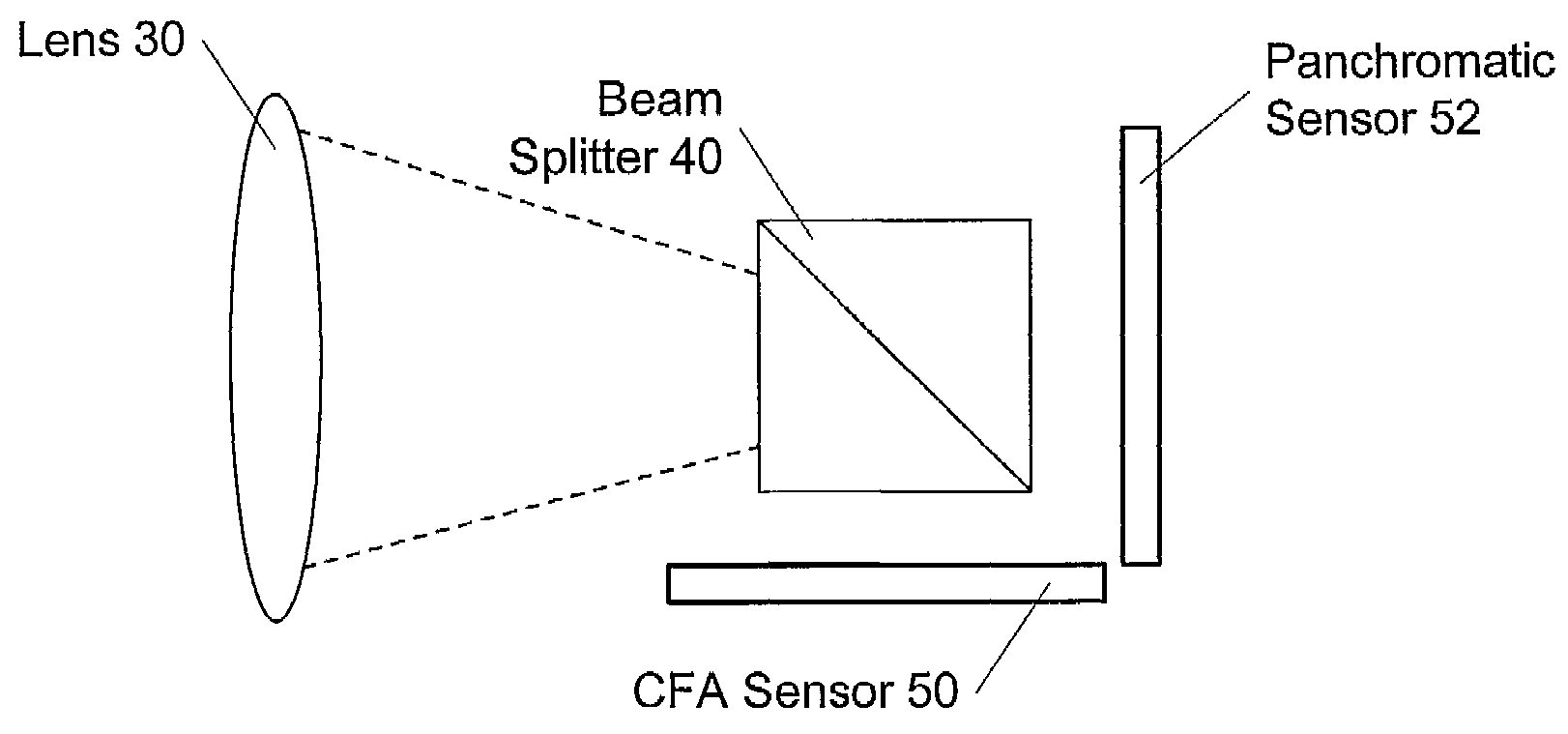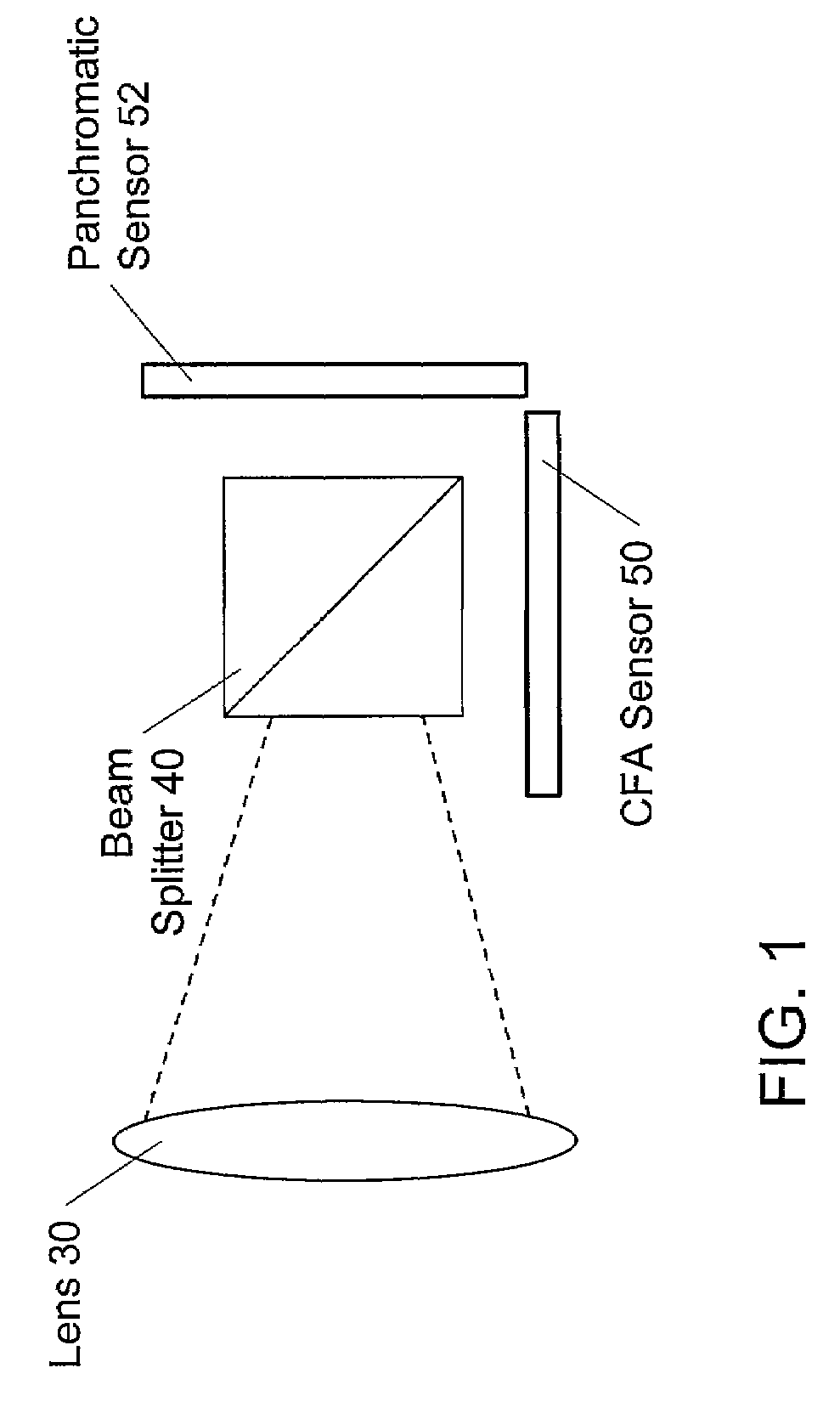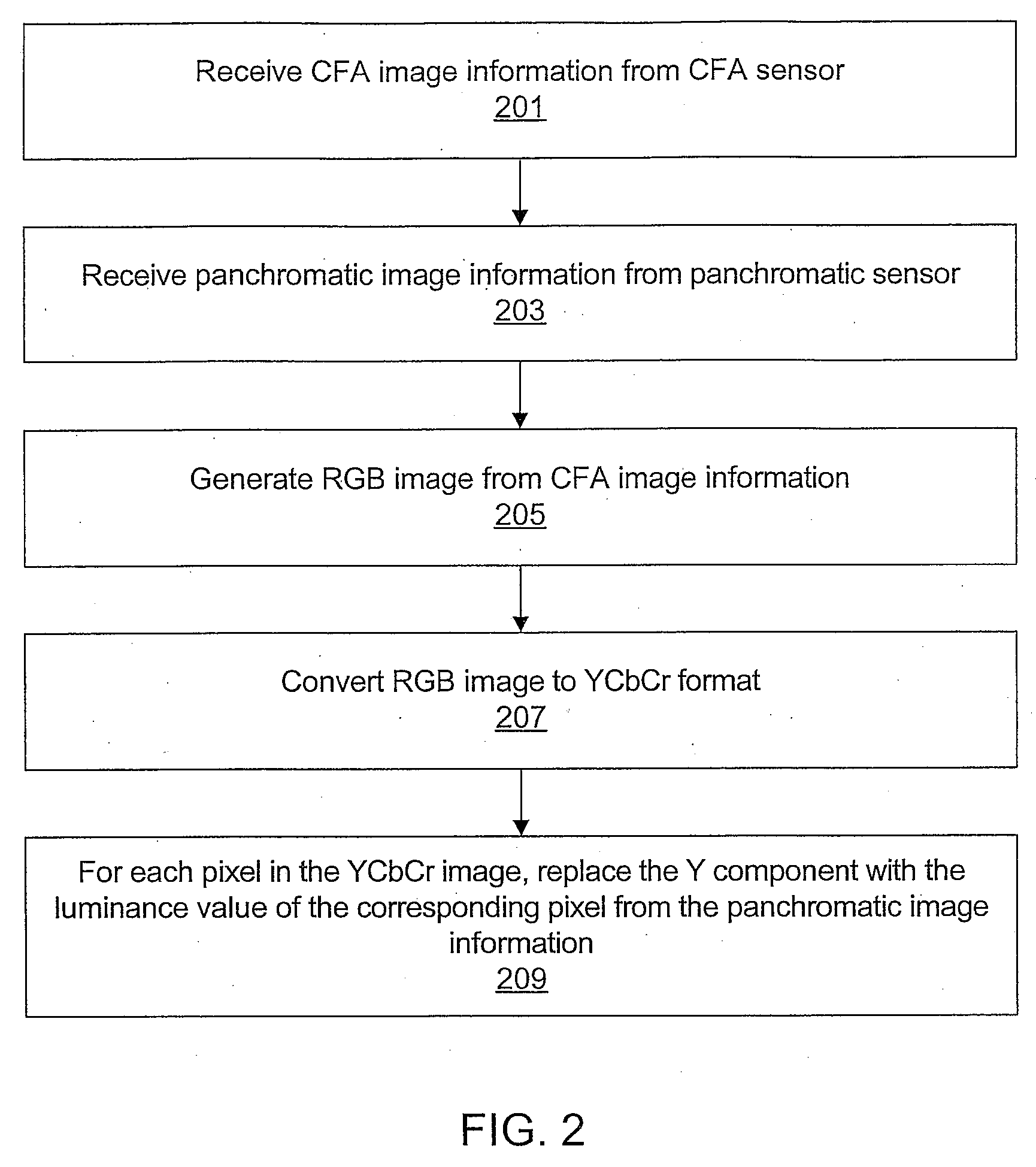Dual Sensor Video Camera
- Summary
- Abstract
- Description
- Claims
- Application Information
AI Technical Summary
Benefits of technology
Problems solved by technology
Method used
Image
Examples
Embodiment Construction
[0021]Various embodiments of a dual-sensor digital video camera are described herein. One of the sensors comprises a color filter array (CFA) sensor, i.e., a sensor overlaid with a color filter array. The color filter array comprises an alternating pattern of color filters, where each color filter is aligned over one of the sensor sites. The CFA sensor is also overlaid with a low-pass filter for preventing or reducing color aliasing, as described above. The other sensor comprises a panchromatic sensor, also referred to as a monochrome sensor. The panchromatic sensor is not overlaid with color filters, and thus, the light falling onto its sensor sites includes all color components. Also, the panchromatic sensor is not overlaid with a low-pass filter. As described below, the dual-sensor video camera produces images based on the image information from both the CFA sensor and the panchromatic sensor.
[0022]FIG. 1 illustrates the two sensors in an exemplary embodiment of the dual-sensor v...
PUM
 Login to View More
Login to View More Abstract
Description
Claims
Application Information
 Login to View More
Login to View More - R&D
- Intellectual Property
- Life Sciences
- Materials
- Tech Scout
- Unparalleled Data Quality
- Higher Quality Content
- 60% Fewer Hallucinations
Browse by: Latest US Patents, China's latest patents, Technical Efficacy Thesaurus, Application Domain, Technology Topic, Popular Technical Reports.
© 2025 PatSnap. All rights reserved.Legal|Privacy policy|Modern Slavery Act Transparency Statement|Sitemap|About US| Contact US: help@patsnap.com



